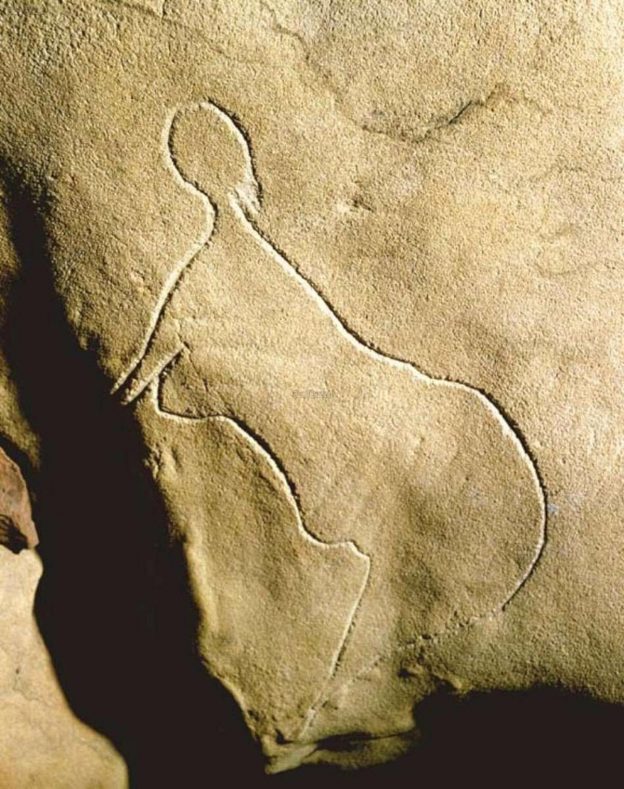The Venus of Cussac is an ancient engraving found in the Cussac Cave, located in the Dordogne region of southwestern France. This prehistoric artwork is estimated to be around 25,000 years old, dating back to the Upper Paleolithic period, which was a time when early modern humans (Homo sapiens) lived in the region.
The Venus of Cussac is a depiction of a female figure, often referred to as a “Venus” figurine. These types of figurines, which represent the female form, are common in Upper Paleolithic art. The Venus of Cussac is unique because it is engraved directly onto the cave wall, rather than being a three-dimensional sculpture like some other Venus figurines found from the same period.
The engraving features a stylized depiction of a woman with exaggerated and abstract features, such as a large abdomen and prominent breasts. These characteristics are believed to emphasize fertility and reproduction, making them significant in the context of prehistoric art. The figure is also adorned with various lines and patterns, which may have held symbolic or ritualistic meanings.
The Cussac Cave itself is renowned for its rich collection of prehistoric art, including engravings, paintings, and drawings. It provides valuable insights into the artistic and cultural expressions of the people who inhabited the region during the Upper Paleolithic era.
The Venus of Cussac might be the home of the first hand-drawn nudes!
